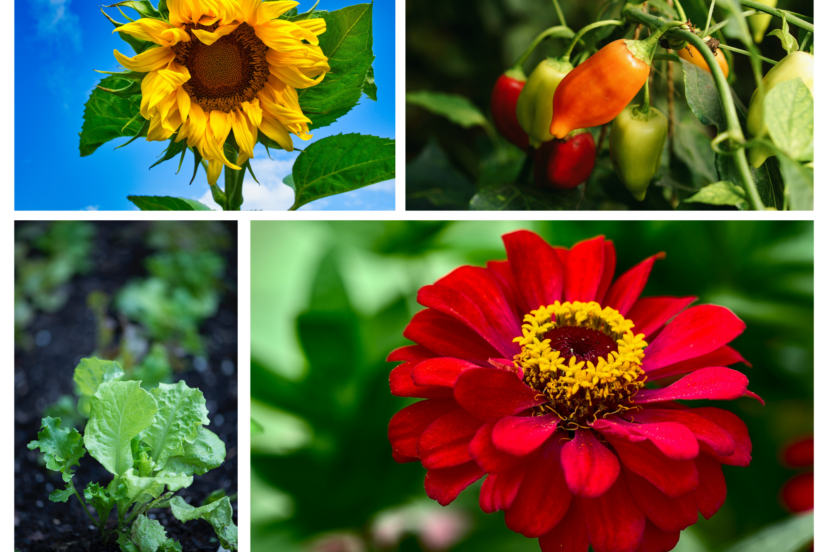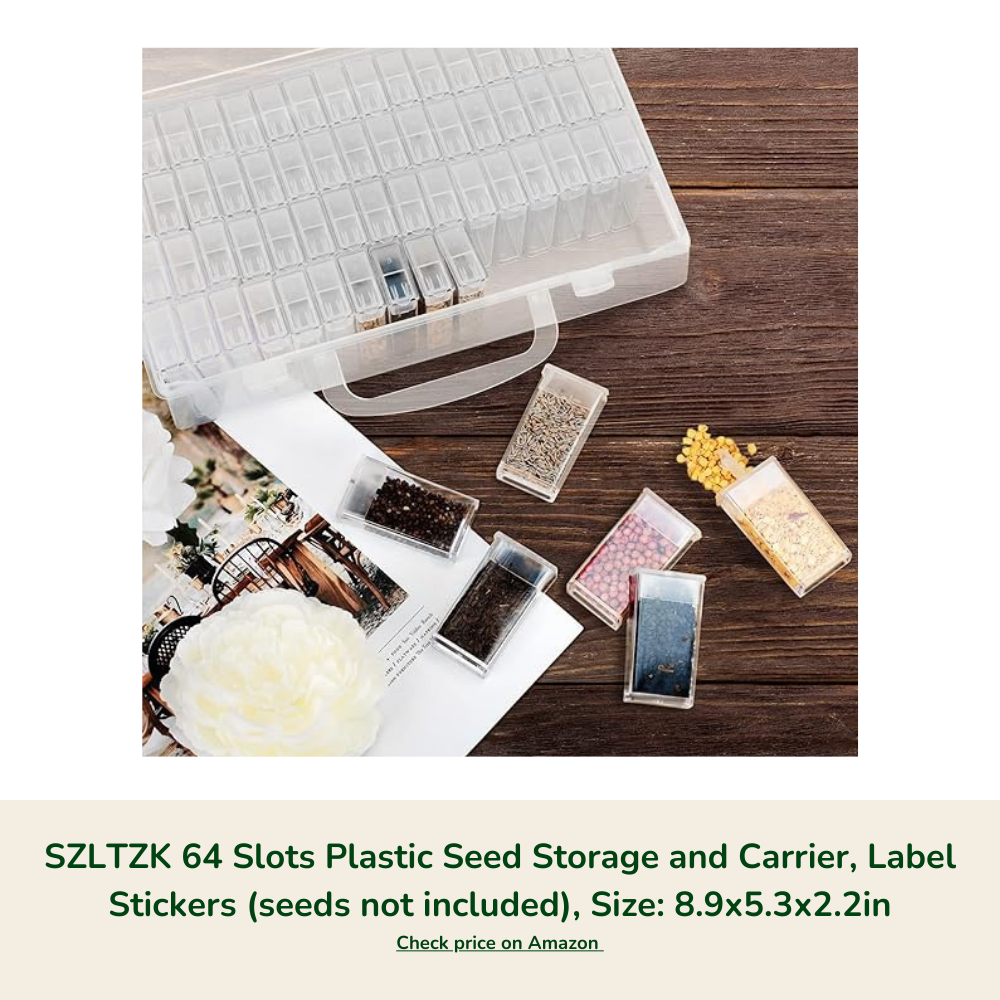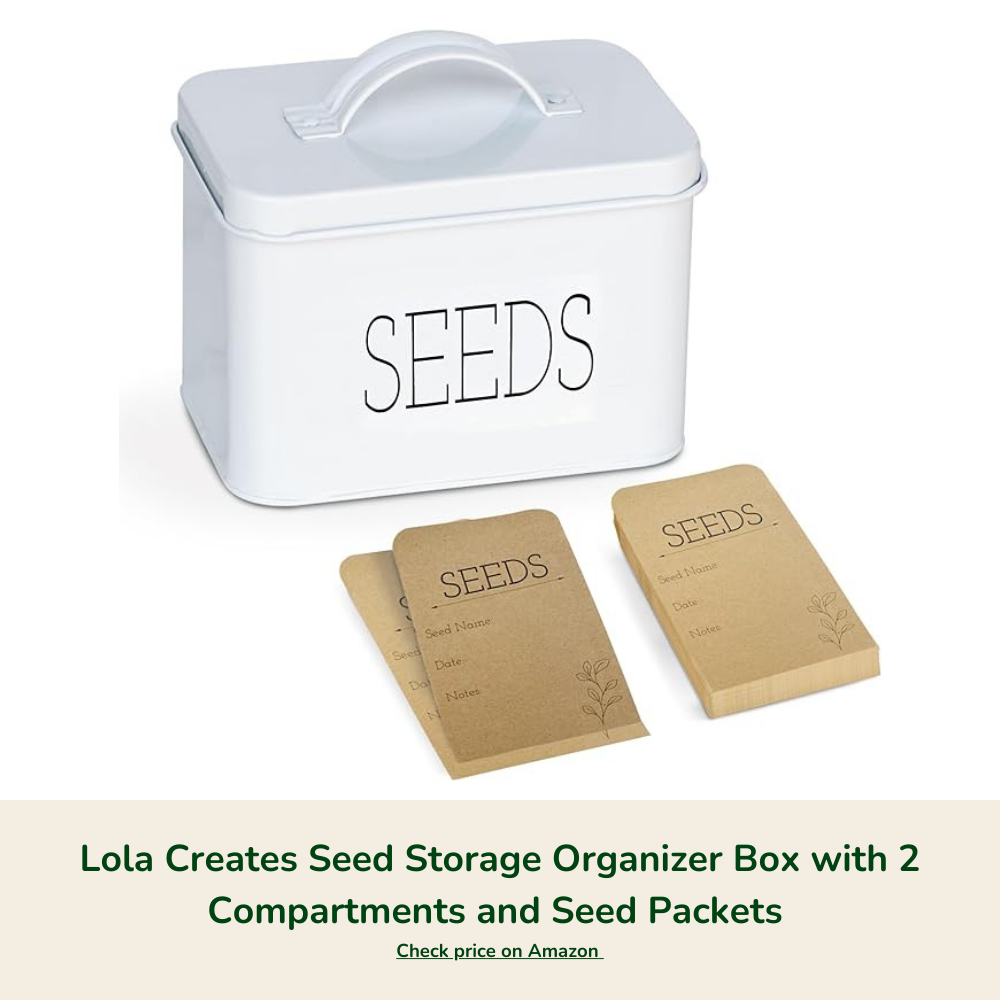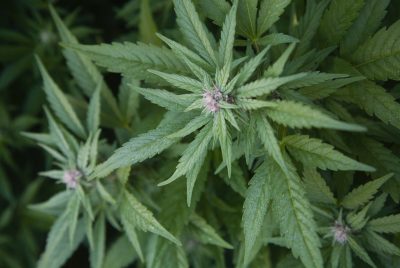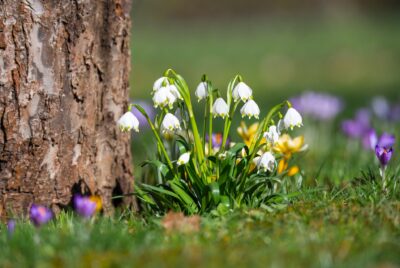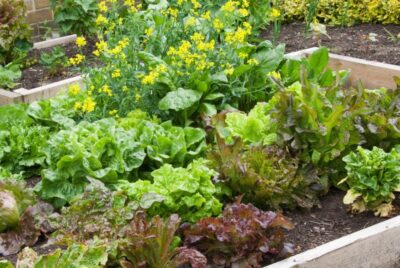Seed Saving: A Gardener’s Guide
Gardening isn’t just about cultivating beautiful plants; it’s also about preserving the incredible diversity of plant species. Seed saving allows us to play a role in ensuring future generations can enjoy a rich variety of plants and crops.
Seed saving isn’t difficult. You can save seeds from vegetables, herbs, and flowers for planting in your garden next year, supplying community seed banks or gifts for friends and family.
In This Article
- The Importance of Seed Saving
- Why Save Seeds?
- Saving vs Eating
- Seed Saving Terminology
- Proper Seed Storage
- Harvesting Seeds
- Seed Drying
- Sharing Seeds
Importance of Seed Saving
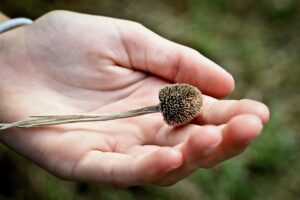
Seed saving can be more than just a hobby; it’s a practice of maintaining plant biodiversity. Saving and sharing seeds contributes to the preservation of plant varieties that could be lost to time. Heirloom and open-pollinated seeds hold the genetics history of plants and provide rich flavors, colors, and adaptability in our plants.
But before you start saving seeds, there are a few things you need to know to ensure the viability of the seeds you are saving.
Why Save Seeds?
- Self-sufficient: By saving seeds, you can produce your own seeds and stop relying on outside sources to provide seeds for you, saving money and a little time.
- Adapted for Your Environment: Saving seeds from your healthiest, most productive plants and replanting them year after year, you create your own healthy strain of seeds that are adapted to your environment. This results in higher germination rates, bigger harvests, and less disease.
- Passing on a Legacy: Saving seeds allows you a unique opportunity to create your own heirloom seeds to pass down through the generations.
Saving vs Eating
Every gardener makes the choice of whether to save seeds or eat the fruit. Lettuce, for example grows a flower stalk which produces tiny seed pods. By the time the flower grows, the lettuce leaves are long past the edible stage. If eaten at this stage, they are very bitter tasting, and the leaves are turning yellow. But the good news is, plants produce many seeds so you can grow a few extra for seed saving purposes.
Seed Saving Terminology
Before you start saving seeds, there are a few terms you need to know. An understanding of how seeds are pollinated and produced will help you succeed at seed saving.
Self-pollinating:
These are plants that pollinate themselves without the help from insects or other plants. Tomatoes, beans, and peas are self-pollinating plants and are great for first-time seed-savers.
Open-pollinated (OP):
Plants that are planted close together still cross-pollinate, meaning the seeds from one variety can be affected by the pollen from a neighboring plant, wind, or insects. These will grow true to whatever parent plant they come from and a decent choice for saving seeds.
Heirloom seeds:
Heirloom seed varieties are a good choice for saving. The seed has been handed down for at least 50 generations in a particular region or area and will be true to the parent plant. A great choice for seed saving.
Hybrid seeds:
Hybrid seeds (F1 or Filial 1) are two varieties that have been cross-pollinated to produce a third variety with desired traits from the “parents” plants. Do not save seeds from hybrid plants as they will not be true to the plant type.
GMO Seeds:
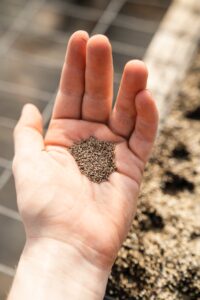
Genetically modified seeds are seeds you want to stay away from for many reasons. GMO seeds aren’t available to home gardeners and are made for large commercial farms. You don’t need to worry about accidentally buying GMO seeds, but GMO seeds can cross-pollinate with plants in your garden is you are too close to a farm that grows GMO crops.
To understand the type of seeds you have, you’ll need to learn how to read seed packets. Every seed packet is different and includes slightly different information but should tell you the seed type it is.
Basically, all heirloom seeds are open-pollinated seeds, but not all open-pollinated seeds are heirloom seeds. So. if growing heirloom seeds is important to you, you may need to do some research on heirloom varieties.
Harvesting Seeds
Just like humans, plants take on the characteristics of their parents. Selecting the healthiest, most robust, best producing adult plants will product strong, healthy, high-yielding offspring. Do not save seeds from diseased fruit or plants.
When harvesting seeds, timing is crucial. Collect seeds when they are fully developed and viable. This mimics the natural condition of the plant that is ready to seed itself. All plants have different signs of seed maturity, so researching each plant’s specific requirements is encouraged.
Seed Drying
Drying out the seed is an important part of saving seeds. Learning to know how and when your seeds are dry involves allowing the ideal amount of moisture to evaporate from the seed. Most seeds require a moisture content between 5 and 8 percent. If there is too much moisture, seeds can become moldy
There are a several methods to drying out your seeds:
Open Air:
Probably the most used method, open air drying is simple and the least amount of work.
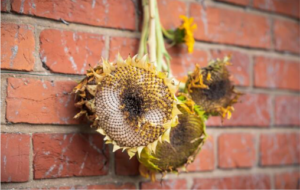
- Harvest the seed pods or fruits you wish to dry
- Gently rub, or thresh the seeds to remove the debris
- Spread on wax or parchment paper, paper towels, or newspaper so they don’t touch
- Place in a cool, dry room for 7-10 days
- Gently stir and dry for another 2-3 weeks
- Place into storage
Brown Paper Bag:
By using a brown paper lunch bag, you let nature help with the drying process.
- Harvesting the entire flower head or stalk after the flowers are spent
- Place into the paper bag, allowing the cut stem to stick out of the bag’s opening.
- Allow the stem to fully die and turn brown over 2 to 3 weeks.
- Pull the seeds out of the dead flower heads within the bag
- Remove and discard any non-seed materials
- With the bag open, let dry for another two to three weeks, shaking occasionally
- Place into storage
Fermentation:
Some wet seeds are covered with a clingy goo or gelid. To break this down, you will need to do this quick fermentation method.
- Remove the “wet” seed from the fruit
- Partially fill a mason jar with water and put the seeds in, cover with a cloth
- Allow the jar to ferment for 3-4 days out of direct sunlight. Two to three times a day, swirl the jar to mix & prevent mold
- As the seeds ferment, the pulp separates from the viable seeds
- Add more water, stir and pour off the pulp. Repeat until the water is clear
- Strain and rinse the seeds thoroughly through a sieve.
- Spread on coffee filters to dry for 1-2 days
- Place into storage
Wet seeds that don’t have the clingy goo like melons, and eggplant can be removed from the fruit and washed under running water. Let dry for several days.
Silica Gel:
Silica gel is a granular substance that pulls and absorbs moisture from the air. You’ll find loose silica at craft stores (preferred) and in your shoe box when you purchase a new pair (kidding).
- Separate the seed from their pods or fruits, weigh them
- Place the same weight of silica gel into a screw-top glass jar with a layer of screening on top of the silica.
- Place the seeds on top of the screening in a thin layer
- Close up and tighten the lid
- Keep it sealed for 7-10 days
- Place into storage
Proper Seed Storage
To preserve your seeds’ viability, you must store them correctly. Dried seeds should be placed in seed packets or even paper envelopes will do. Each should be labeled with the name of the variety and the date harvested and stored in air-tight containers, preferably glass containers to keep moisture and pests away. Seeds stored in a cool, dark, and dry place should remain viable for at least a couple of years.
Properly labeling your seeds is essential for keeping track of varieties and planting times. Use waterproof labels and permanent markers to avoid any confusion.
Sharing Seeds
Part of the joy of seed saving is planting and growing your seeds for years to come. But sharing these seeds with neighbors, community seed banks, exchanges help safeguard seeds, share knowledge, and build local food systems.
Make sure to research the local laws on seed sharing and consider volunteering or starting a seed sharing community.
Final thoughts
Seed saving is a powerful way for gardeners to make a positive impact on the world. By choosing the right seeds, mastering seed-saving techniques, and sharing your knowledge, you become a steward of biodiversity. So, dig in, get your hands dirty, and make a difference, one seed at a time!
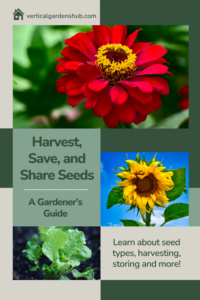
FAQs
Q: Can I save seeds from any plant?
A: Seed saving is possible for many plants, but some require more advanced techniques than others. Start with easy-to-save seeds like tomatoes, beans, and lettuce before moving on to more challenging varieties.
Q: How long can saved seeds last?
A: When stored properly, most saved seeds can remain viable for several years. However, some seeds, like onions and leeks, have a shorter shelf life.
Q: What are the benefits of heirloom seeds?
A: Heirloom seeds offer historical significance, unique flavors, and genetic diversity. They allow you to connect with the past while contributing to future plant diversity.
Q: Are there any legal restrictions on seed saving?
A: In some cases, patented or genetically modified seeds may have legal restrictions on saving and sharing. Always check the seed packaging or consult local laws for guidance.
Q: How can I get involved in a community seed bank?
A: Search for local gardening clubs, seed exchange events, or community organizations that promote seed saving. They often provide resources and opportunities for collaboration.

